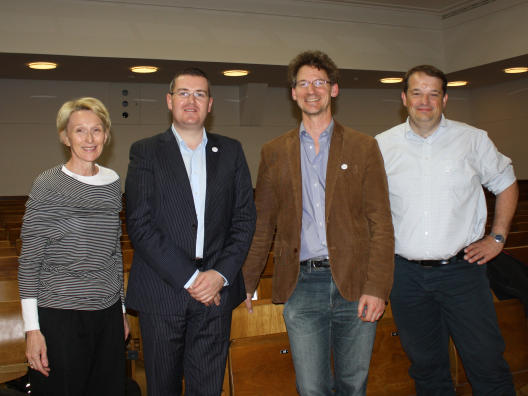'Cells in front of the camera - unraveling the organized chaos in a cell'
Projects in Roland Wedlich-Södlner's lab focus on the organization and role of the cell cortex during cellular morphogenesis and cell polarization. In particular he combines advance fluorescence microscopy techniques including total internal reflection (TIRF) microscopy, or fluorescence recovery after photobleaching (FRAP) to study cortical actin dynamics and lateral segregation in the plasma membrane. His findings suggest that the yeast plasma membrane self-organizes into a patchwork of co-existing domains. Through work in yeast, bacteria and mammalian cells, he also found that cortical actin filaments are actively translated through molecular motors - either by myosins or through processive cell wall synthesizing enzymes. Ultimately, he aims to integrate these various approaches to obtain a systems level understanding of the cell cortex. Wedlich-Söldner underlaid is talk with colourful images of cells in motion.
References Wedlich-Söldner
Yu JH, Crevenna AH, Bettenbühl M, Freisinger T, Wedlich-Söldner R. Cortical actin dynamics driven by formins and myosin V (2011) Journal of Cell Science 124: 1533-41 Abstract
Domínguez-Escobar J, Chastanet A, Crevenna AH, Fromion V, Wedlich-Söldner R. Carballido-López R. Processive movement of MreB-associated cell wall biosynthetic complexes in bacteria. (2011) Science 333: 217-30. Abstract
Spira F, Mueller NS, Beck G, von Olshausen P, Beig J, Wedlich-Söldner R. Patchwork organization of the yeast plasma membrane into numerous coexisting domains. (2012) Nature Cell Biology 14: 640-8 Abstract


